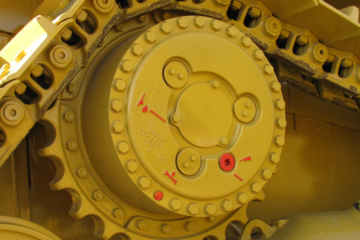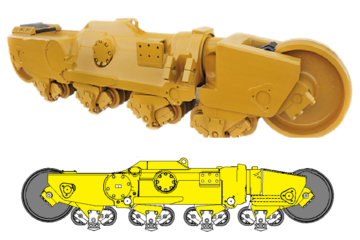All Undercarriage Components wear at different rates and the aim of monitoring the undercarriage is to review the differences in the wear rates between the components and identify which components will limiting the life of the entire undercarriage system as a whole. This means identifying which components will wear out first and thus prevent the other components from achieving 100% wear before the undercarriage needs to be replaced. Any component that are not 100% worn when removed represents hours of life lost and money thrown away. In most cases replacing 75% worn components is not an option when reviewed financially
The real kicker here is that it is double the cost or lost value because
- The residual component wear material not used is lost, and
- The replacement component must complete the life of the component that has been removed.
In most cases replacing 75% worn components to achieve full life on an undercarriage system is not an option financially or otherwise.
In many situations there will be limiting component which is on the Critical Life Path and when they run out of life, the Undercarriage System as a whole run’s out of life. Each Jobsite or minesite is unique, and it is important to identify for each, what factors affect the different component wear rates and then which components have the limiting life and are to be monitored the Critical Life Path.
Some examples are as follows: –
- Bushing Seals in Bauxite mining applications
- Track Shoes in Hard rock applications
- Bushes in sand and high moisture content sites
These are but a few, but every site will have its limitations on certain undercarriage components. Do you know yours?



0 Comments